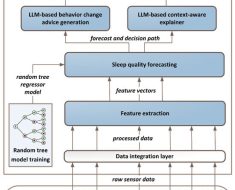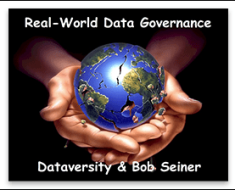
Workforce management finds applications across various industries, including IT and telecommunications, BFSI, government, healthcare, education, manufacturing, retail, and more.
This is an exclusive interview conducted by the Editor Team of CIO news with Vikas Wahee, Head of Solutions, BPM & ITES, Intellicus Technologies
Can you explain the concept of workforce management (WFM) and its significance in modern workplaces?
Workforce management (WFM) encompasses processes that organizations employ to ensure their employees are in the right place at the right time, thus reducing risks and enhancing productivity. It is a top-down approach that starts with leadership establishing clear strategic goals. Initially developed in call centers during the 1980s to enhance consistency and efficiency, WFM has evolved from traditional planning to automated, contemporary practices.
Businesses adopt WFM to refine time management, forecast workloads, gain analytical insights, and expedite employee scheduling. Each organization requires a unique WFM strategy due to varying goals, requirements, and demographics. Successful WFM strategies comprise forecasting and budgeting, where past and present data inform future budgeting, and planning and scheduling that optimize performance and delegation, often using what-if analysis for flexibility.
WFM also involves data reporting and analytics, offering insights into business and team efficiency, both in real-time and historically. Lastly, it addresses compliance and risk mitigation, streamlining these essential aspects and making it easier for organizations to adhere to crucial compliance measures.
How does effective WFM contribute to workforce optimization, and what are the key benefits for businesses?
WFM leads to improved employee productivity by ensuring that staff are deployed efficiently, reducing downtime and idle periods. When employees are in the right place at the right time, they can focus on their tasks, resulting in increased productivity and a more engaged workforce.
Furthermore, WFM supports better business planning by enabling accurate workforce forecasting and budgeting. This ensures that staffing levels align with demand, minimizing issues of overstaffing or understaffing and facilitating long-term and short-term business planning.
Efficient scheduling is another key benefit of WFM. It allows businesses to create optimized schedules that consider factors such as employee availability and workload, leading to reduced overtime costs and improved work-life balance for employees.
Lowering operational costs is a significant advantage. By effectively managing the workforce, organizations can reduce labor-related expenses, such as overtime costs and inefficient resource allocation.
Lastly, WFM contributes to better customer service by placing the right personnel in the right positions. This results in shorter response times, reduced customer waiting times, and ultimately enhanced customer satisfaction. These benefits are crucial for businesses seeking to maintain competitiveness and long-term success in today’s dynamic business environment.
In what ways can WFM solutions help organizations balance staffing levels with customer demand, especially in industries with fluctuating workloads?
One of the primary challenges faced in today’s contact centers is accurately forecasting demand and aligning staffing levels accordingly. Fluctuations in inbound contact volumes can lead to scenarios of understaffing or overstaffing, resulting in inefficient employee utilization and operational disruptions.
Optimizing staff levels has a direct impact on the customer experience. Addressing these challenges can be daunting, but the right workforce management (WFM) solution tailored to your contact center’s needs can help you tackle them proactively, fostering a more balanced and productive environment for all stakeholders.
A key benefit of WFM software is its ability to optimize scheduling and workload, which, in turn, reduces agent churn. An effective WFM solution should recommend efficient shift types, employee allocations, and the necessary number of shifts to ensure optimal staffing and service level adherence.
Coupled with real-time monitoring and reporting capabilities, contact center managers are empowered to take a proactive approach to team performance management. They can make on-the-fly schedule adjustments, mitigating excessive overtime costs that not only impact the bottom line but also agent attrition rates, morale, and overall satisfaction.
Can you share some real-world examples or case studies where companies have successfully leveraged WFM for workforce optimization?
Many BPOs continue to employ conservative methods for business planning, with only a few embracing advanced tools for comprehensive workforce management (WFM) planning and workforce optimization.
One example of a customer success story that implemented the WFM solution and has experienced a significant impact on business planning and management is Conneqt Business Solutions Limited (CBSL).
(Add impact numbers.) The integration of WFM into their operations brought enhanced efficiency and productivity. It enabled CBSL to accurately forecast demand and align staffing levels, avoiding understaffing and overstaffing scenarios. This optimization positively impacted their customer experience, ensuring prompt service.
Furthermore, WFM streamlined scheduling and workload management, reducing agent churn and enhancing overall staff satisfaction. They were able to control leakages to sub-3% by intelligently scheduling the right skill set for the right task at the right time. Real-time monitoring and reporting capabilities empowered CBSL’s managers to proactively manage team performance and make on-the-fly schedule adjustments, leading to lower overtime costs. In sum, CBSL’s implementation of WFM delivered tangible improvements in operations, employee morale, and customer service quality.
What role do data analytics and predictive modeling play in optimizing workforce schedules and resource allocation?
Predictive analytics, a data-driven methodology, utilizes historical data, external factors, statistical algorithms, and machine learning to forecast future outcomes, aiming to move beyond mere historical insights to predictive assessments of future scenarios. Organizations are increasingly adopting predictive analytics to enhance their profitability and competitive edge.
Within contact centers, predictive analytics proves to be a valuable tool in various ways. It assists in optimizing resource allocation by forecasting call volume and recognizing peak periods and call patterns. This ensures that the right resources are available when and where they are most needed, enhancing operational efficiency.
Real-time monitoring and alerting are facilitated through the continuous analysis of real-time data, such as call frequency and urgency. This empowers predictive models to identify anomalies and generate alerts, facilitating proactive responses and resource allocation during critical scenarios.
Additionally, predictive analytics supports continuous improvement and optimization by enabling organizations to collect and analyze data on response times, resource utilization, and outcomes. By identifying trends and root causes, BPOs can consistently enhance their operational performance, fine-tuning resource allocation strategies.
Overall, predictive analytics enables data-driven decision-making, enhancing operational efficiency, customer experience, and employee performance. It empowers BPOs to allocate resources effectively, reduce response times, and ultimately elevate the overall customer experience.
WFM often involves scheduling, time tracking, and labor forecasting. How do these components collectively enhance workforce optimization?
To keep pace with evolving market demands, companies seek ways to streamline their processes. Workforce optimization leverages data for quality and performance management, enhancing employee efficiency. In a contact center, this translates to elevated customer service, satisfaction, and loyalty.
To adopt a customer-centric approach, companies can leverage historical data to match skilled resources with different types of customer interactions. Empowering employees to have a say in their schedules fosters ownership and responsibility. This collaborative approach minimizes employee turnover and elevates the customer experience.
Workforce optimization offers businesses the opportunity to excel while reducing operational costs, enabling data-driven decision-making. Effective software streamlines processes, leading to enhanced employee efficiency, engagement, and productivity.
The result is improved customer satisfaction and enhanced customer retention, cultivating a business that prioritizes both employees and customers, ultimately contributing to sustainable success.
Employee engagement and satisfaction are essential for a productive workforce. How does WFM contribute to improving these aspects?
Employee engagement and satisfaction are pivotal to a productive workforce. Workforce management (WFM) contributes to improving these aspects by empowering employees to participate in the scheduling process and bid for their desired shifts and days off. When employees are given the option to select their own schedules, they can take into account external factors that can impact their availability, ultimately leading to higher productivity and satisfaction. This, in turn, results in reduced agent churn and boosts customer satisfaction.
Additionally, WFM allows businesses to take decisive actions based on data and analytics, leading to operational cost reduction and streamlined processes. This, in turn, results in increased employee efficiency, engagement, and productivity.
The improved customer satisfaction and customer retention achieved through workforce optimization ultimately create a balanced focus on both employees and customers, contributing to a more productive and satisfied workforce.
What challenges do businesses commonly face when implementing WFM solutions for workforce optimization, and how can they overcome them?
Workforce management (WFM) tools offer organizations the means to optimize resource planning, reduce costs, and enhance employee engagement and productivity. However, implementing WFM tools involves potential pitfalls and challenges that must be addressed for project success.
One common challenge is the lack of clear goals and metrics. To overcome this, it’s essential to define project objectives, expected outcomes, and the metrics by which success will be measured. A step-by-step, agile approach ensures alignment with the organization’s goals.
Inadequate data quality and integration present another obstacle. To address this, a thorough data audit and cleansing process should precede WFM tool implementation. Data sources must be compatible and integrated, and data governance and security protocols should be established.
Insufficient user adoption and training can hinder WFM tool implementation. Engaging users from the outset, understanding their needs, providing adequate training, and soliciting feedback are essential to mitigating this challenge.
Unrealistic expectations and timelines are potential pitfalls. Setting flexible, realistic expectations and timelines based on project scope, resources, and risks is crucial, along with proactive management.
Finally, a lack of continuous improvement and innovation may threaten WFM projects. A culture of ongoing improvement and innovation is necessary to maintain relevance, effectiveness, and value.
Are there specific industries or sectors where WFM has a more significant impact on workforce optimization, and why?
Workforce management finds applications across various industries, including IT and telecommunications, BFSI, government, healthcare, education, manufacturing, retail, and more. Among these, the IT and telecommunications sector is poised for significant growth from 2023 to 2032 due to its substantial workforce size. The sector’s large workforce underscores the importance of effective workforce management.
These industries commonly employ contact center services, which initially catered to supply chain management in large manufacturing companies. Today, the business process outsourcing (BPO) sector has expanded to encompass a wide range of fields, making the contact center industry a major player influenced by workforce management. This evolution highlights the critical role of workforce management in optimizing operations and customer service across various sectors.
How does technology, including AI and automation, integrate into WFM to further enhance workforce optimization?
The integration of generative AI into workforce management yields numerous advantages. Firstly, it enhances demand forecasting by analyzing historical data, trends, and external factors, allowing for better anticipation of fluctuations and efficient resource management. This, in turn, improves operational efficiency, optimizes costs, and minimizes labor expenses.
Generative AI also excels at optimizing employee schedules, considering factors such as employee availability, skill sets, preferences, and business constraints. Its algorithms generate schedules that maximize productivity and employee satisfaction, ultimately leading to content employees and satisfied customers.
Additionally, generative AI aids in skill matching by aligning employee skills, project requirements, and availability. This ensures that employees are scheduled for the right tasks at the right times, enhancing the customer experience, improving productivity, reducing project risks, and optimizing talent utilization. In essence, the integration of generative AI into workforce management transforms operations, resulting in a more efficient and effective workforce.
Also read: Redefining the Executive Game: The Scrappy Revolution in C-Suite Innovation
Do Follow: CIO News LinkedIn Account | CIO News Facebook | CIO News Youtube | CIO News Twitter
About us:
CIO News, a proprietary of Mercadeo, produces award-winning content and resources for IT leaders across any industry through print articles and recorded video interviews on topics in the technology sector such as Digital Transformation, Artificial Intelligence (AI), Machine Learning (ML), Cloud, Robotics, Cyber-security, Data, Analytics, SOC, SASE, among other technology topics.



